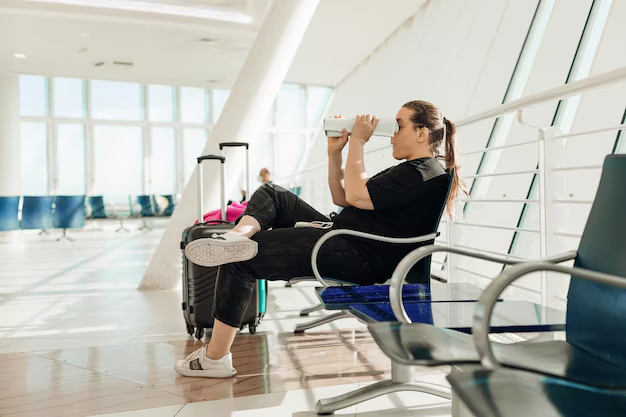When is it Safe to Fly After Cataract Surgery?
Flying after cataract surgery is a common concern for many patients eager to return to their normal routines. Understanding how soon you can take to the skies again involves weighing several factors related to your recovery process. This guide will delve into the usual recommendations, highlight how flying might affect your eye health, and touch on associated considerations to keep your journey smooth.
✈️ Understanding Cataract Surgery and Air Travel
Cataract surgery is a common procedure designed to restore clearer vision by removing a clouded lens and replacing it with an artificial one. Typically, recovery is swift, with patients experiencing improved vision within days. However, the healing process involves ensuring the eye adjusts to its new lens, and certain activities—like flying—may require temporary caution.
Common Considerations Post-Surgery
**1. Follow-up Appointments: Usually, a post-operative visit is scheduled a day or two after surgery to check eye health and healing progress. These appointments ensure that any early signs of complications are promptly managed.
**2. Changes in Altitude and Pressure: Flying involves changes in air pressure, which could impact the eyes post-surgery. Understanding how these changes affect your healing eye can prepare you for discussions with your healthcare provider.
**3. Avoiding Infections: Planes and airports are crowded environments where your risk of infection could be higher. Protecting your eye from potential irritants or bacteria is crucial during the recovery period.
🌐 Factors Influencing When You Can Fly
Each patient's recovery is unique, and here are some things to consider when deciding on air travel post-surgery:
The Doctor's Recommendation
Before planning any travel, have a detailed conversation with your ophthalmologist. They can give personalized advice based on your specific health status and surgery outcome. General recommendations are often tailored to accommodate:
- Healing Rate: Every individual heals at a different pace. Some might be fit to fly within days, while others might need weeks.
- Post-operative Complications: If complications such as increased intraocular pressure occur, flying might be delayed.
The Nature of Your Flight
Not all flights are equal. Here's a breakdown of factors that might influence your decision:
- Short vs. Long Haul Flights: Short flights may exert less stress on your eyes compared to long-hauls, due to lower overall exposure to altitude and pressure changes.
- Frequency: If frequent travel is part of your lifestyle, provide this information to your healthcare provider for a more tailored post-operative plan.
Post-surgery Precautions
Besides doctor consultations, these self-care measures are essential:
- Prescribed Medication: Regular use of prescribed eye drops and medications aids in reducing inflammation and preventing infections.
- Protective Gear: Wearing sunglasses and eye shields when traveling can protect your eyes from potential irritants.
🚦 Practical Guidelines and Precautions for Flying
While preparing for your flight, implementing certain strategies can aid in a smoother experience:
Eye Care Essentials
- **Moisturizers and Drops: **Cabin air is often dry, so pack your prescribed eye drops to maintain moisture during the flight.
- Eyewear: Use sunglasses to prevent strain from UV light.
Health and Comfort
- Frequent Breaks: If possible, book an aisle seat to facilitate movement and blood circulation, thereby reducing stress on your body.
- **Diet and Hydration: **Staying hydrated and consuming light meals can halve completing the stress on your system.
Safety Checks
- Sanitization: Keep hand sanitizers or wipes handy to maintain hygiene, avoiding contact with your eye.
🚀 Easing Back Into Everyday Life
Flying might be just one element as you resume your regular activities after cataract surgery. Here are other activities and tips to consider:
Driving
Vision stabilization is crucial before getting back behind the wheel. Confirm with your ophthalmologist when it’s safe to drive, as this depends on your personal recovery process and visual accuracy post-surgery.
Routine Activities
Resuming daily routines such as light household chores and walking is often encouraged soon after approval from your healthcare provider, promoting normalcy and gentle physical activity.
Exercise
Gradual reintroduction to exercise follows the same principles as flying—start small, avoid strain, and focus on exercises that don't involve sudden head or neck movements.
📊 Summary and Takeaways
Below is a concise list of key points for quick reference regarding flying after cataract surgery:
| Category | Recommendation |
|---|---|
| 🗓️ Follow-up Visits | Always complete these to monitor recovery. |
| ✈️ Flight Timing | Consult your doctor for personalized advice. |
| 🎯 Flight Type | Consider short flights initially, avoid long hauls. |
| 💧 Dry Eyes Management | Use moisturizers and keep eye drops accessible. |
| 🛡️ Eye Protection | Use sunglasses and avoid eye contact with surfaces. |
| 🧴 Hygiene Maintenance | Keep sanitizers handy to prevent infections. |
| 💡 General Activities | Slowly resume them with professional guidance. |
Key Takeaway:
Prioritize personalized medical advice, remain cautious about environmental exposure, and maintain hygiene to ensure a healthy recovery and a safe return to travel post-surgery. Following these strategic tips and seeking guidance from healthcare professionals will empower you to make informed decisions about your eye health and air travel.
This extensive approach, combining professional consultation with self-awareness and caution, lays a robust framework for safely navigating life after cataract surgery.
